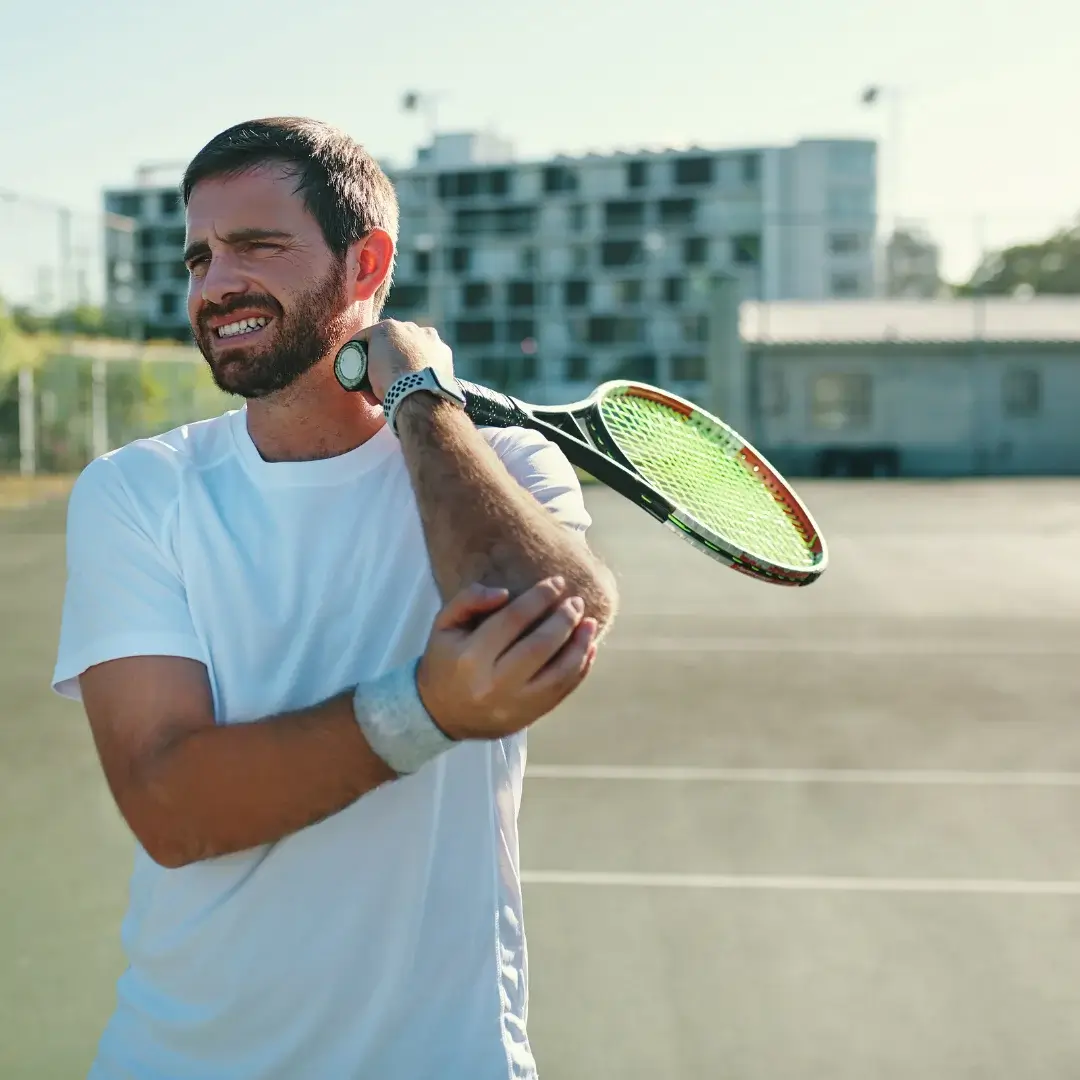Overview:
Tennis elbow, clinically known as lateral epicondylitis, is a common condition characterised by pain and tenderness on the outer aspect of the elbow. Despite its name, tennis elbow can affect individuals engaged in a variety of activities that involve repetitive gripping or wrist extension motions, such as typing, painting, or using hand tools. This condition typically develops gradually over time and may progressively worsen without intervention.
Anatomy:
The elbow joint consists of three bones: the humerus (upper arm bone), radius, and ulna. Lateral epicondylitis specifically involves the tendons that attach to the lateral epicondyle, a bony prominence on the outer side of the elbow. These tendons connect the muscles of the forearm to the lateral epicondyle and play a crucial role in wrist and hand movements.
Causes:
Tennis elbow often results from repetitive stress or overuse of the forearm muscles, leading to microscopic tears and degeneration of the tendon fibres. Common contributing factors include:
- Repetitive Arm Movements: Activities that involve repetitive gripping, lifting, or wrist extension motions, such as tennis, golf, or manual labour, can strain the tendons around the elbow joint.
- Improper Technique: Incorrect technique or equipment usage during sports or occupational activities may increase the risk of developing tennis elbow.
- Age and Degeneration: The risk of developing tennis elbow increases with age as tendons become less flexible and more prone to injury.
- Muscle Weakness or Imbalance: Weakness or imbalances in the muscles of the forearm and shoulder can alter biomechanics and predispose individuals to overuse injuries.
Symptoms:
Signs and symptoms of tennis elbow may include:
- Pain and tenderness on the outer aspect of the elbow, particularly with gripping or lifting objects.
- Weakness or difficulty performing activities that require forearm strength, such as shaking hands or turning a doorknob.
- Stiffness or restricted range of motion in the elbow joint.
- Pain that radiates down the forearm or into the wrist.
- Worsening symptoms with repetitive arm movements or activities that stress the affected tendon.
Treatment:
Treatment for tennis elbow aims to alleviate pain, reduce inflammation, and promote healing of the affected tendon:
- Rest and Activity Modification: Avoid activities that exacerbate symptoms and modify grip techniques or equipment usage to reduce strain on the elbow joint.
- Ice Therapy: Apply ice packs to the affected area for 15-20 minutes several times a day to reduce pain and swelling.
- NSAIDs: Over-the-counter nonsteroidal anti-inflammatory drugs (NSAIDs) such as ibuprofen or naproxen may help relieve pain and inflammation.
- Bracing or Splinting: Wearing a brace or splint around the forearm can provide support and limit excessive wrist extension during activities.
- Physical Therapy: A physical therapist can prescribe specific exercises to stretch and strengthen the forearm muscles, improve flexibility, and correct muscle imbalances contributing to tennis elbow.
- Corticosteroid Injection: In cases of severe pain and inflammation, a healthcare provider may administer a corticosteroid injection into the affected tendon to provide temporary relief.
- Extracorporeal Shock Wave Therapy (ESWT): ESWT uses high-energy shock waves to stimulate healing of the tendon and may be beneficial for chronic cases of tennis elbow.
- Platelet-Rich Plasma (PRP) Therapy: PRP involves injecting concentrated platelets from the patient’s own blood into the affected tendon to promote tissue regeneration and accelerate healing.
Prevention:
To prevent tennis elbow and reduce the risk of recurrence, consider the following preventive measures:
- Warm up before engaging in physical activities and perform stretching exercises to prepare the muscles and tendons for activity.
- Use proper technique and equipment when participating in sports or occupational tasks that involve repetitive arm movements.
- Take regular breaks during repetitive activities to allow the muscles to rest and recover.
- Incorporate strength training exercises for the forearm and shoulder muscles to improve overall muscle strength and endurance.
- Use ergonomic tools and equipment with proper grip size and handle design to minimise stress on the elbow joint.
Outlook/Prognosis:
With appropriate treatment and modifications to activity levels, the outlook for individuals with tennis elbow is generally favourable. Most individuals experience significant improvement in symptoms with conservative measures such as rest, physical therapy, and activity modification. However, it may take several weeks to months for symptoms to fully resolve, and adherence to preventive strategies is essential to prevent recurrence. If symptoms persist or worsen despite conservative treatment, consult a healthcare provider for further evaluation and management.

